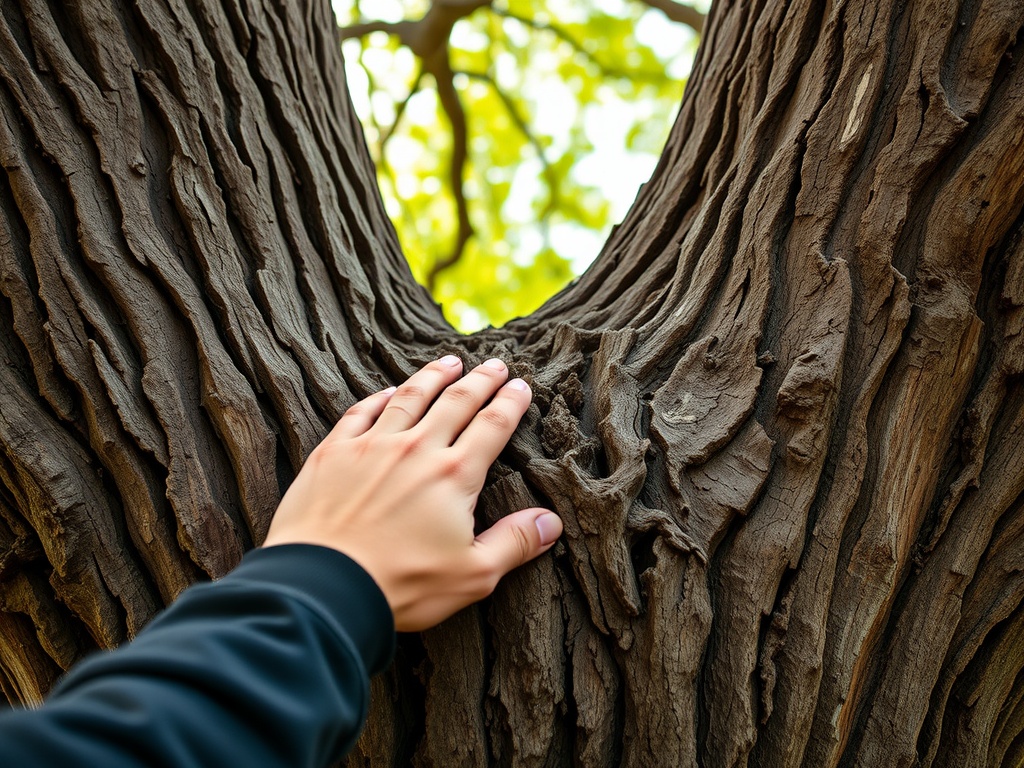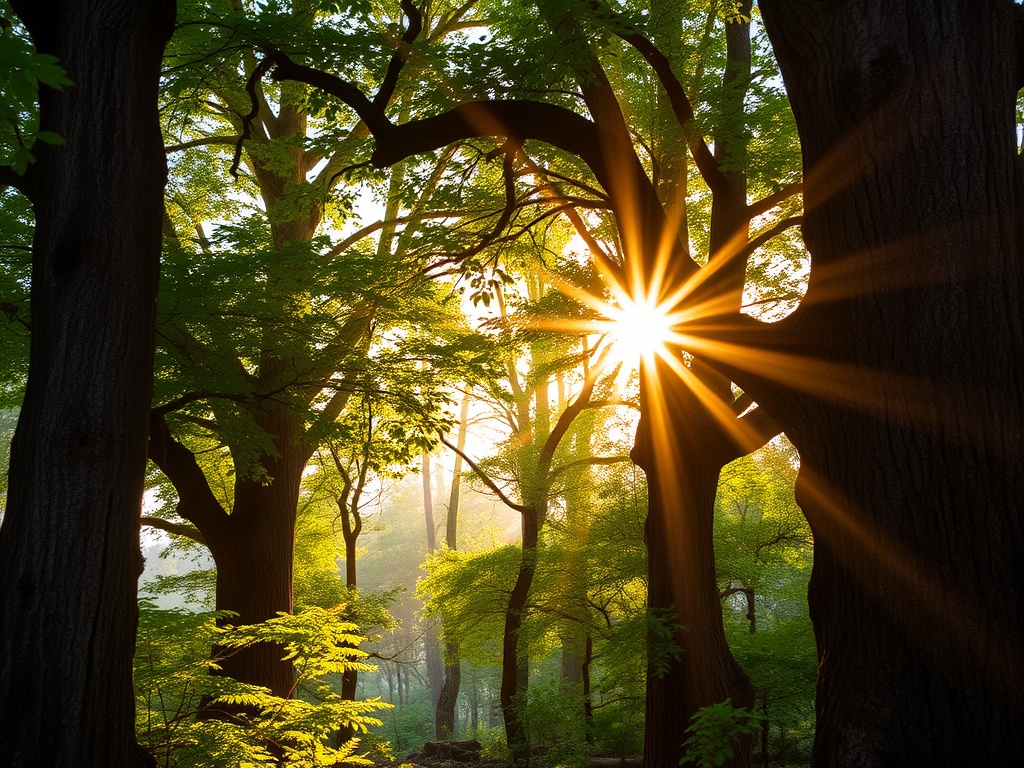Reflections of a Life Intertwined with Nature
Today, I found solace in an outdoor shower, embraced by the cool, unyielding mud of England. Yesterday’s hunt for sustenance yielded nothing but the faint winter light filtering through our steadfast star. Just last week, I stood in stillness, allowing the whispers of nature to wash over me. A month ago, I faced the unsettling realization that my sibling is unwell, and a year back, a fragment of my arm succumbed to the ravages of time. A decade ago, I was a mere shadow of my current self. A hundred years back, I played melodies with the wind while Spitfires scribbled their tales across the sky. Two centuries ago, I was overshadowed by the distant birth of Eiffel’s ambition. Three hundred years ago, I witnessed the flicker of the first gaslights illuminating the encroaching darkness. Four centuries ago, I sprouted in the wake of the Great Plague. What am I?
I am a tree.
Well, to clarify, I am Chris Packham. It is indeed true that I share a composition of carbon with my beloved beech tree. However, my essence is distinctly different. Though I may feel ancient, I am not timeless. I may have matured, but I lack the grandeur of age. I am a part of nature, yet I do not exist in perfect harmony with it.
This majestic tree’s history profoundly influences my present and charts the course of my daily pilgrimages with my poodles, seeking refuge beneath its colossal branches. There, I find comfort in my own insignificance. The sublime force of nature is beyond imitation, and I cherish the understanding that I am but a fleeting presence in its vast shadow.
My daily endeavors aim to steer the future towards a brighter horizon. Yet, standing beside this living organism, I am reminded of my own humility and inconsequentiality. Accepting this truth is essential for my connection to nature.
I am on the verge of receiving my second pair of hearing aids, I need corrective lens surgery (again), and my back aches with the weight of time. I recognize my aging in each complaint; I cannot see without those bothersome glasses, and I endure my partner’s constant nudges to “just do some pilates.” However, I also know that one day, the new leaves I cherish will cease to emerge, and my voice will fade into silence. The fragile line of light that is my life, separating my past nothingness from my future nothingness, will extinguish. Goodnight, goodbye, farewell.
When that day comes, I wish for my ashes to be mingled with those of my late poodles and interred around the beech tree that has anchored my spirit for decades.
I know I am not alone in forming a profound bond with trees. The indigenous Orang Rimba of Sumatra, whom I have had the privilege to meet, are assigned two sacred trees at birth. First, the tenggeris, a tall evergreen, has its bark rubbed onto the crown of a newborn to fortify it with strength. Next is the sentubung, a small perennial shrub adorned with white flowers, where their placenta is lovingly buried.
The tree’s guardian watches over it for life, and anyone found to harm it faces severe consequences. In essence, this sacred tree becomes the child’s lifelong companion. This is my kind of spirituality, which is why I dedicated my latest children’s book to that magnificent beech.
By the time I merge with my beech as carbon, I hope it still flourishes with vibrant leaves. These trees prefer drier conditions; being of European origin, they find themselves at the upper limits of comfort in the UK. As we all know, that comfort zone is shrinking due to climate change and the extreme weather phenomena that accompany it.
Back in my garden, I strive to repay the debt to nature for the gift of life. I plant saplings, for I have always been drawn more to a hopeful future than fearful of a troubled past. This perspective makes me less averse to risks. Indeed, I refuse to be confined to any box, for I believe no such box exists. This outlook comes with its challenges, such as the “trollidiots” who attack me online. But honestly? Who cares? Not me!
When I envision the year 2525, I must stretch my optimism to see those saplings flourishing, their buds emerging as they contribute to the decarbonization of our planet. Beyond the borders of my garden, I dream of a future where nature reclaims its rightful place in a world less dominated by humanity—where the green of the Earth vastly outweighs the grey. With this vision in mind, I smile with every thrust of my spade, savoring each handful of mud and relishing my cherished (vegan) hot chocolate breaks.
I may no longer believe in Christmas, but I still yearn for miracles. I must have faith that, despite the mounting evidence to the contrary, my generation can implement more environmental solutions than it has created problems. So, I will dig on until I become nothing more than fertilizer for my cherished friend, the giant beech in the woods. Until my poodles and I transform into its leaves—how wonderful that will be.
This Week I Have Been…

Visiting… the Hayward Gallery, my favorite venue located on the South Bank of the Thames. Its brutalist architecture hosts bold and provocative exhibitions. Currently, Linder’s Danger Came Smiling and Mickalene Thomas’s All About Love are on display, both exceptional in their own right.
Linder’s sharp and cutting montages critically dissect our seismic shifts in attitudes toward materialism, fashion, and gender norms. In contrast, Thomas’s work is a sumptuous feast for the senses—a glittering boudoir filled with rich, deep colors, alluding to Manet’s portraits. It offers a fragrant exploration of black femininity and power, framed within the context of 1970s “blaxploitation” films. With only an hour and a half at my disposal, I plan to return; second visits to exhibitions always yield deeper insights.
Reading… Mainly New Scientist and Viz. These two publications are worlds apart, offering very different pleasures. New Scientist should be mandatory reading for many in the country. It brilliantly tackles climate issues, presenting, almost dispassionately, the terrifying realities we face. We all need to make informed decisions on how to shape our futures. The next time I encounter Keir Starmer or Rachel Reeves in Westminster, I should slip a copy into their pocket. Yet, it also provides astonishing nuggets of new science, reaffirming my faith in the brilliance of the human mind. In stark contrast, the joy of Viz lies in its clever wit, peppered with lines like, “I wonder if Rod Hull ever used Emu to take hot stuff out of the oven”—a playful nod to the comedian rarely seen without his puppet, Emu.
Listening… I find myself intermittently tuned into the podcast The Rest is History, akin to a radio station that occasionally plays a U2 track. I adore it, though a glib comment can spark my ire, leading me to switch to History Extra. Currently, I’m engrossed in discussions about Suetonius’s biographies of infamous Roman emperors, presented by Dominic Sandbrook and Tom Holland. Their insights into these powerful yet notorious figures reveal sordid, shocking tales that are strangely captivating. Now, I can’t help but ponder: where are the contemporary parallels to such figures?
Little Experts: Superhero Plants by Chris Packham, illustrated by Jake Williams, is available now (Red Shed, Hardback, £9.99)




